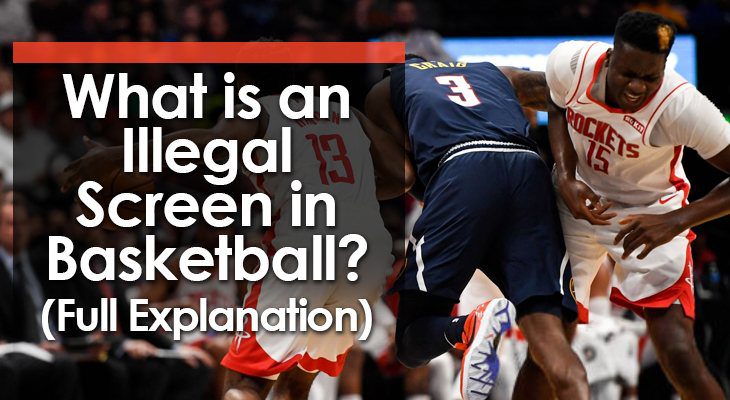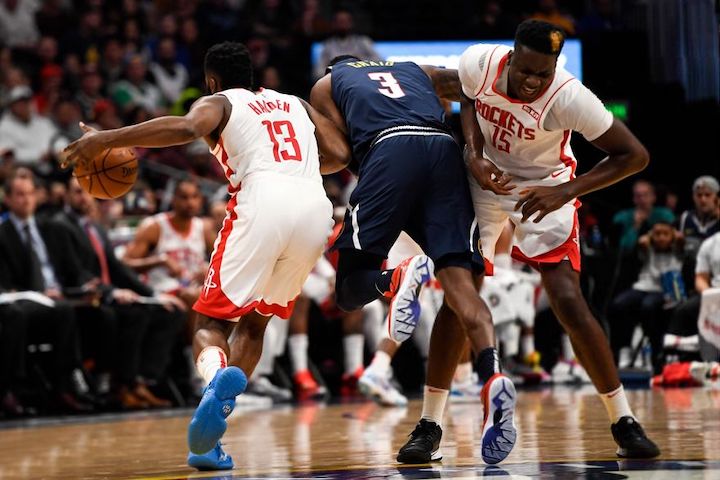
Besides traveling, no rule in basketball leaves people more confused than the illegal screen.
Due to improved three-point shooting and the game becoming more spread out, screens are a bigger part of every team's offense.
Every game you'll see on-ball screens, pick-and-rolls, pick-and-pops, etc.
Teams run dozens of these actions every game.
Only thing is…
Many screens step right to the edge of being illegal.
In this article, I'll give a breakdown of what constitutes an illegal screen in basketball and I'll show you how to teach players to avoid setting illegal screens.
What is an Illegal Screen in Basketball?
There are several rules a screening offensive player must adhere to for it to be a legal screen.
Once a screen is set, the player must:
- Hold their position
- Give the defender space (one step) to avoid the screen
This is where players often get into trouble...
Defenders are taught to anticipate screens and slide around them to maintain their defensive position on their man.
Illegal screens often occur when a defender anticipates a screen and "beats" their man to the spot, causing the screener to alter their positioning.
Example of a (barely) Illegal Screen
So much of what is or isn't an illegal screen lies in the eyes of the official.
Take this play between Dayton and Richmond, for example:
That's close.
The screener does appear to lean forward and slightly out with his left shoulder as the defender goes by, even though his feet don't move.
By the letter of the law, that is technically an illegal screen...
Although I'd argue the subtle movement is a natural instinct to brace oneself and didn't create an unfair advantage.
The hard contact and the way the defender crumpled to the floor, along with it being in the open, makes it look worse than it was.
Teaching Players to Avoid Illegal Screens
Stress to your players that they must set clean, hard, legal screens.
Players who cheat on their screens with an extra elbow or sticking their posterior into the defender as they try to get by are often labeled as cheap or dirty.
You don't want to be known as the dirty team.
At lower levels, playing a clean and legal game is worth more than trying to wring out every little edge just because the officials might not notice.

Why Teams Use Screens
Screens or "picks" are one of the most effective ways for the offense to create an advantage.
Screens can be set both "on ball" (for the ball handler) or "off ball" (for an offensive player not in possession of the ball).
The majority of offensive possessions rely on screens because they're excellent at the following:
(1) Creating space for shooting and driving
(2) Generating mismatches
Illegal Screens in the NBA
With the pick-and-roll making up the foundation of many NBA offenses, there's no shortage of players -- usually centers -- who have made a name for themselves with their bone-crushing screens.
Take the first play in this video, for example...
Humphries gives Rondo multiple steps to avoid the contact, holds his position, and keeps his arms, legs, and hips rigid.
A textbook screen.
It's on Rondo's teammates to call out "pick" and let him know he's sprinting towards a brick wall.
Some teams are even beginning to track what they call "screen assists," where open shots are created thanks to well-set picks.
You can't watch a Utah Jazz game with the local announcers without hearing them laud Rudy Gobert's screen assist numbers multiple times.
But with so many picks being set, many players are getting craftier with how they set them...
...and many borderline illegal (or just plain illegal) screens are ignored by officials.
This isn't meant to slander the Warriors.
(every team does similar)
But they use many off-ball screens, have accurate shooters, and have been one of the best teams for the last decade, making them easy targets.
These sorts of calls are often ignored.
Watch how Andrew Bogut and Draymond Green casually slide into the path of defenders as they try to stay with their man.
In most cases, they're not set or square and certainly aren't giving the requisite one step of space for the defender to adjust.
Like traveling, the game is being played so fast, and even with three officials, they can't be watching everything at once.
